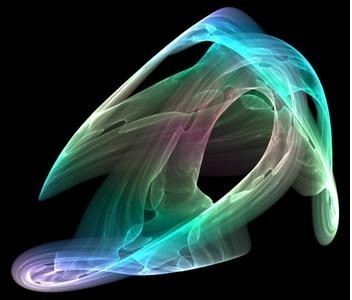Amy Catanzano: 'The Imaginary Present,' a poem & a commentary from Quantum Poetics

contemporary poetry
insert: poem here
insert: essay here call it:
essay-poem insert:
appropriated text
call it: poetry insert:
sound poem call it:
wave score insert:
visual poem call it:
if sound could see
claim: the text is dead
just schrödinger: the text!
insert: tired formatting
like strikethrough
fade: your erasures
use: basic font variations
insert: another footnote
please instead please
insert: some nu-sonnets
inject: the bacterium!
insert: interactive
irony call it: data
plan allow for:
confession perform:
nothing call it or
do not call it: silence
sing: off-key call it:
a speech call the page:
canvas buy: more
hard-drives consider:
a book trailer make:
a movie get: a bit
scientific call it:
quantum allow for:
uncertainty but do not
hesitate never:
hesitate make:
confident declarations
to get the job call it:
criticism stand by:
your assertions
never: waver never:
mistranslate: consciously
multiply: the I write:
reviews never: review
suck: up suck: in curl:
the tongue display:
a mistake call it:
necessary failure
reject: “Genius”
for “Unoriginal Genius” reject:
“Unoriginal Genius” for “SubGenius”
have: more slack!
launch another:
collaboration
break: the line
never: break lines
reject: poetry accept:
multi-genre accept: poetry
accept: document insert:
a memoir try: hy-bric-a-brac
refute: the subject
have: a subject but never
one subject position
have: one subject position
call it: language gesture:
but do not speak speak:
but do not gesture say:
complicate: say: resonate:
do not be so: quotidian!
set: all of your poems
in the future write:
as if you are from outer
space frame: your
process refute: everything
except procedure call it:
foregrounding
refute: everything
except experiment
call it: kool kitsch
it: up call it: trashy
make: a mask use:
the monster transgress:
culture defy: authority
protest: imperialism
protest: authenticity
protest: artifice reclaim:
agency protest: agency
protest: protest
invoke: aleatoric
construct: constraints
tighten: your form
sometimes: self-efface
memorize: your poems
read from your smart
phone do not under
any circumstances:
read from that smart
phone check: your voice:
check your context
check: your ethics reject:
all ethics check: your
poethics make: more
rules believe: in god
check: your god reject:
god know: your censors!
be: difficult, elegiac, or eco
and non/representational
but never: pretentious
or worse: whispers: precious
revel: pretentiously fake:
your pretenses write:
[NOTE. Amy Catanzano has appeared often in these pages & represents an important move toward the reconciliation of poetry & speculative & experimental thought across the arts & sciences. Of the work, above, she writes: “The poem represents my attempt to explore what I am thinking of as the poetics of poetics, the varying authoritative directives and propositions within contemporary poetry, including approaches I work with and also ones I want to challenge. I address, for example, Vanessa Place's recent declaration that the text is dead (I say ‘just schrödinger: the text!’) and Marjorie Perloff's Unoriginal Genius (I advocate, instead, for the SubGenius).” Other excerpts from her four-part seminal essay “Quantum Poetics: Writing the Speed of Light” have previously appeared on Poems and Poetics & on Jacket2 as part of a collaborative poetry/science discussion project.
Of the present excerpt she writes further: “The poem is part of a manuscript called ‘Quantum Poetics: The Word and Its Earthwork,’ where I insert poems between each paragraph of my four-part essay on quantum poetics. By writing this poem in strikethrough I am trying to challenge both proscriptive reading tendencies and what I see as an unimaginative formal device. To read a strikethrough one must get beyond a physical limitation with the line being partially occluded. However, the strikethrough itself requires little thought and effort to produce (it’s just a click away); integrating it and similar formatting techniques into poems these days without more robust contexts feels, to me, just as generic as centering a poem on a page. By using the strikethrough in my poem and simultaneously critiquing it, I’m invoking a kind of reverse engineering in my process. I’m taking a pre-existing gesture I see as obsolete and repurposing it as a way to explore poetics by starting from the original gesture (the strikethrough that displays a deletion) and deducing more possibilities for the gesture (my poem) without solely relying on former associations connected to the original. The reader might view the strikethrough as an occlusion to transparency, even a metaphor for difficulty, but in my poem I confront it as a tired typographical gimmick. There's a quantum poetics to my logic, a Schrödinger's cat I am embedding into my poem. (Erwin Schrödinger’s wave mechanics, with its more familiar concepts, challenged Werner Heisenberg’s abstract matrix mechanics, though soon after this challenge Heisenberg presented his groundbreaking uncertainty principle, which led to wider acceptance of Heisenberg’s formulation of quantum mechanics. Nonetheless.) Schrödinger's cat is alive and dead at the same time. The poem is readable and not. The strikethrough is simultaneously a gesture and a gimmick. I would argue that strikethroughs have been successfully incorporated into typographical and theoretical experiments in poetry, especially before the proliferation of electronic word-processing programs. What I am questioning is if it and other formatting techniques one finds on the toolbar can be interesting if used in isolation—as they often are—from more complex approaches to visual experimentation on the page, such as what we find in visual poetry or in a score from a sound poem. In my poem I am aiming to explore what forms and processes writers and readers of poetry are interpreting as relevant to contemporary and even future contexts—technological, aesthetic, transhuman.”]
Poems and poetics